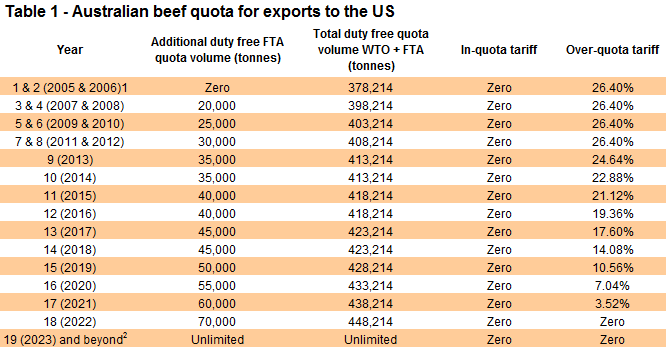Subscribe to The Weekly e-newsletter
For in-depth red meat market news, information and analysis.
Australia’s quota for beef exports to the US
14 January 2016
In 2015, for the first time since the Australia-US Free Trade Agreement came into effect in 2005, the Australian Department of Agriculture (now Department of Agriculture and Water Resources – DAWR) implemented quota allocations after reaching 85% of the annual quota before 1 October. The 2015 quota was 418,214 tonnes swt (the same as 2016), of which 99% was filled by Australian beef exporters.
Under the quota arrangements in place, if 85% of the annual quota is filled before 1 October, the DAWR allocates the remaining 15% based on volumes shipped by each company in the previous two calendar years. Beef can be exported outside the quota, but attracts a tariff (detailed in Table 1 below). Over time, the quota volume is increasing, and the tariff decreasing.
2015 was an exceptional year, and one that is unlikely to be repeated any time soon. After reaching a three-decade high in national cattle numbers in 2012 and 2013, Australian cattle turn-off (including slaughter and live export) reached unprecedented highs through 2014 and 2015. This resulted in huge beef production – at a time when US demand for imported beef was significantly higher than in recent years. Australian beef production is forecast to fall in 2016, as are US beef imports (USDA), which will reduce the risk of reaching quota allocation again this year.
For those following the 2016 quota position over time, it is worth noting that as at 12 January, Australian beef exporters had used 11% of the 2016 quota (45,855 tonnes swt), despite shipments from 1-12 January of just 5,548 tonnes swt. This is because most of the beef shipped to the US during the end of November and December was exported under the 2016 quota (shipping times allow for this kind of activity).



